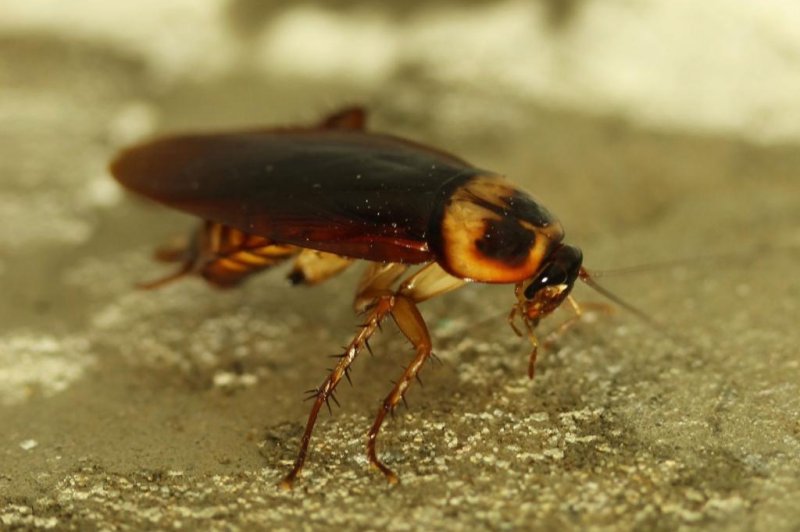The cockroach's approach to walking and sprinting could inspire more energy-efficient walking robots. Photo by
Pixabay/CC
Dec. 8 (UPI) -- Scientists have identified a shift in the gaits of speedy cockroaches as the insects kick it into high gear. The discovery could help engineers train robots to walk more stably and efficiently.
The latest research -- published this week in the journal Frontiers in Zoology -- shows a mid-speed change in the biomechanics of a cockroach's gait characterizes its acceleration from scurry to sprint. The shift recalls those made by other animals, including horses, which famously transition from a trot to a gallop.
"I was particularly surprised that a change in mechanisms stabilizing the animal's movement goes hand in hand with a change in leg coordination," Tom Weihmann, a zoologist at the University of Cologne in Germany, said in a news release.
When crawling at a slow pace, a cockroach always has three of its six legs moving in coordination. This technique, combined with the insect's low center of gravity, provides for excellent stabilization. But how does the cockroach maintain control of its legs and body at higher speeds?
Researchers found cockroaches utilize a gait technique known as dynamic stabilization at high speeds and on slippery surfaces. The method sacrifices synchronization and coordination for speed and helps the cockroach achieve high energy efficiency without requiring input from the central nervous system.
"This discovery not only has far-reaching implications regarding the behavior and ecology of insects and other arthropodes," said Weihmann. "Our results can also contribute to solving some problems we still have with the movement of robots."
Robots with legs can traverse a greater range of landscapes and surface contours than those with wheels. But managing the movement of legs requires a large amount of energy. Researchers think their analysis of the cockroach's dynamic stabilization approach could help engineers manage a robot's gait more efficiently.
"Robots with legs that can be used here on Earth after disasters, or on Mars or other planets, are often modeled on insects," said Weihmann. "Adapting the coordination patterns of robot legs to those of fast-running cockroaches can help the robot use energy more efficiently and hence increase its endurance in an inhospitable environment."















